The Independent's journalism is supported by our readers. When you purchase through links on our site, we may earn commission.
Triangle Strategy review: Old-school looks with dynamic turn-based action
We spent 40 hours playing Square Enix’s latest release to bring you this comprehensive guide
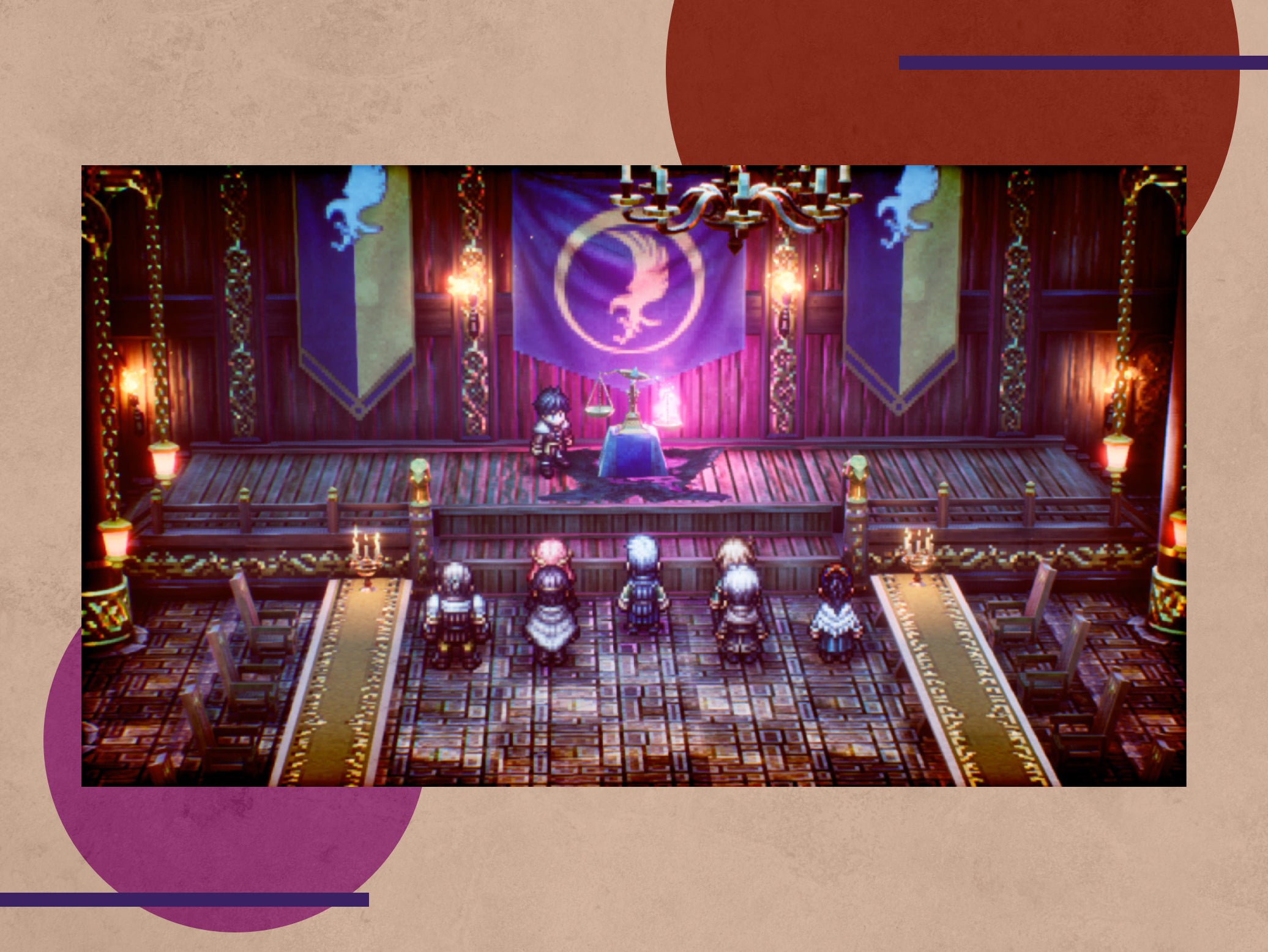
Square Enix have been pushing hard on publishing new games using their self-described “HD-2D” graphics after the unexpected success of Octopath Traveller. “HD-2D”, for those not in the know, is a term referring to the retro-style art sprites and tilt-shifted environments that gave the game a miniature look and feel.
Now, with Triangle Strategy, that trend is being continued. But rather than extending the world of Octopath in a sequel, a new genre is being explored using the same art direction.
The nature of a turn-based strategy lends itself well to recreating fights, using an art style that replicates the look and feel of miniatures being pushed around on a table, perhaps even more so than a traditional RPG.
Combined with a story that will demand players make unexpectedly difficult choices as the narrative unfolds, Triangle Strategy’s gameplay also pushes players to use a map’s entirety to their advantage in a variety of scenarios with plenty of replayability.
How we tested
We played Triangle Strategy for around 40 hours on our Nintendo Switch OLED model. In that time we managed to complete one of the game’s multiple endings and a large variety of optional battles. Here’s what we made of it.
Read more:
‘Triangle Strategy’: £49.99, Argos.co.uk
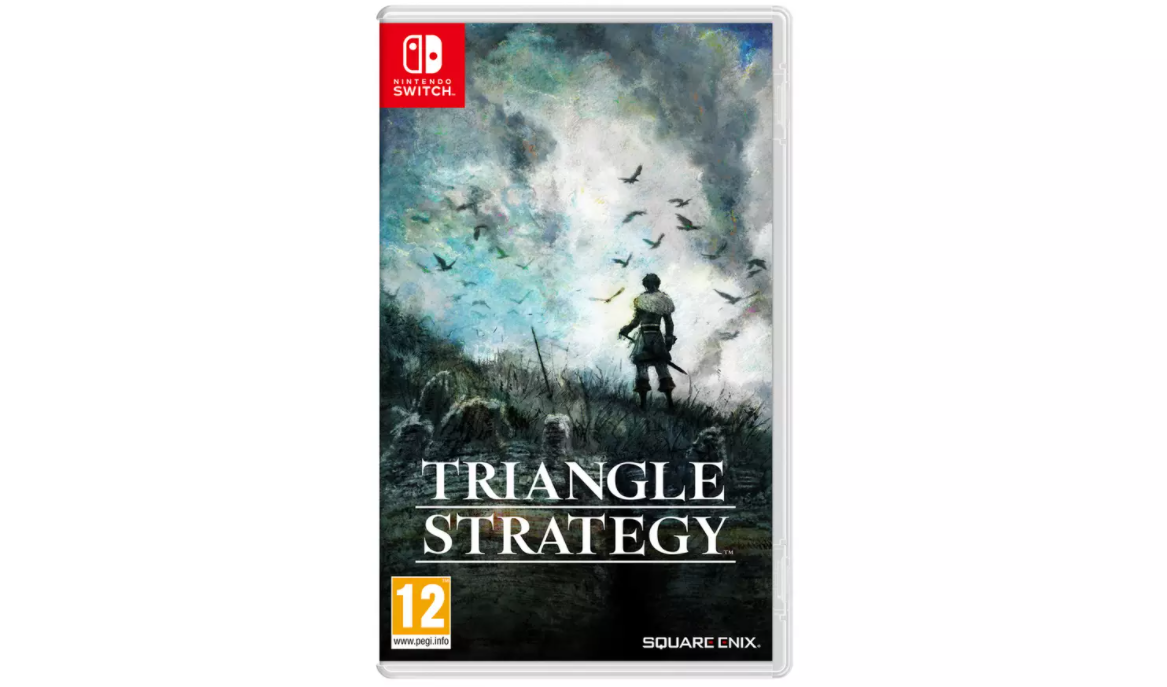
Rating: 8/10
- Consoles: Nintendo Switch
- Publisher: Square Enix
- Release date: 4 March 2022
- Age rating: 12+
Story
Three decades after a resource war over finite reserves of iron and salt, the continent of Norzelia knows a fragile peace. Iron deposits are controlled by the Duchy of Aesfrost to the north and Salt is controlled by the Holy State of Hyzante in the south. Taxation and distribution of the resources have caused tensions to bubble over again and the continent is on the verge of another war.
The Kingdom of Glenbrook, acts as a buffer and a mediator between Aesfrost and Hyzante with House Wolfort acting as one of the key allies to Glenbrook’s king. The house is led by Serenoa, a young lord who has recently inherited the title from his father Symon. Serenoa must lead his house, army and allies to victory through proxy battles as a grand conspiracy reveals itself in the continent.
In Triangle Strategy, the intricacy of this feudal setting already extends far beyond what was capable in its spiritual predecessor, Octopath Traveller. With the opportunity to focus on the realm’s politics rather than the individual journey’s of the characters themselves, the genre lends itself well to exploring the consequences and aftermaths of every major world event.
Read more: Triangle Strategy preview, here’s how to try it for free
Cutscenes and exploration can be chosen from an overworld map which gives a sparse view over the continent, not unlike a war map, with markers for troop movements and key areas of interest, such as keeps and rivers, being the focal points.
Optional cutscenes can quickly take place across the entire region, without being restricted to the worldview of one country in particular. News travels fast, and the reaction of key characters and their respective courts can be viewed immediately after they occur, which makes the scale of each battle feel much grander as a result.
While many more characters become available to play and command on the battlefield, Serenoa’s story is shared with six of his closest allies, such as Frederica, a half sister of the Duke of Aesfrost and his betrothed as well as Benedict, House Wolfort’s steward and tactician and Prince Roland, the youngest son of the King of Glenbrook.
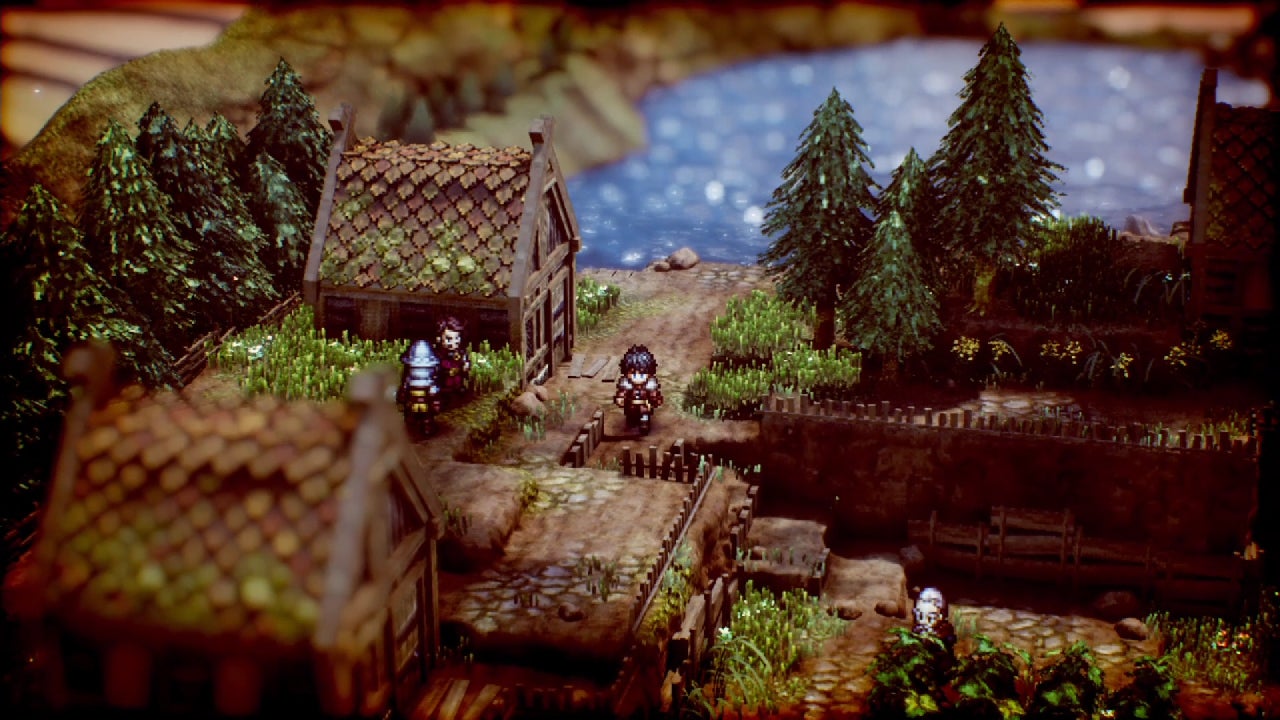
Each character has their own motivations and during key decisions, the seven characters decide the path forward as a group. Before these decisions are made, Serenoa has a chance to speak with each person individually and either strengthen their resolve, or try to convert their decision. But players may not always be successful, based on the arguments they make.
After Serenoa has had a chance to speak with his council individually, the choices are weighed on the “convictions of scale”, determining which route the party will take.
Responses can be given based on three key ideals: utility, morality and liberty. While at first each ideal can feel like the same solution, told through three different viewpoints, failing to make a clear argument that aligns with the characters’ beliefs can lead them to vote against you. So paying attention to their attitudes towards each value will come in handy during those branching choices.
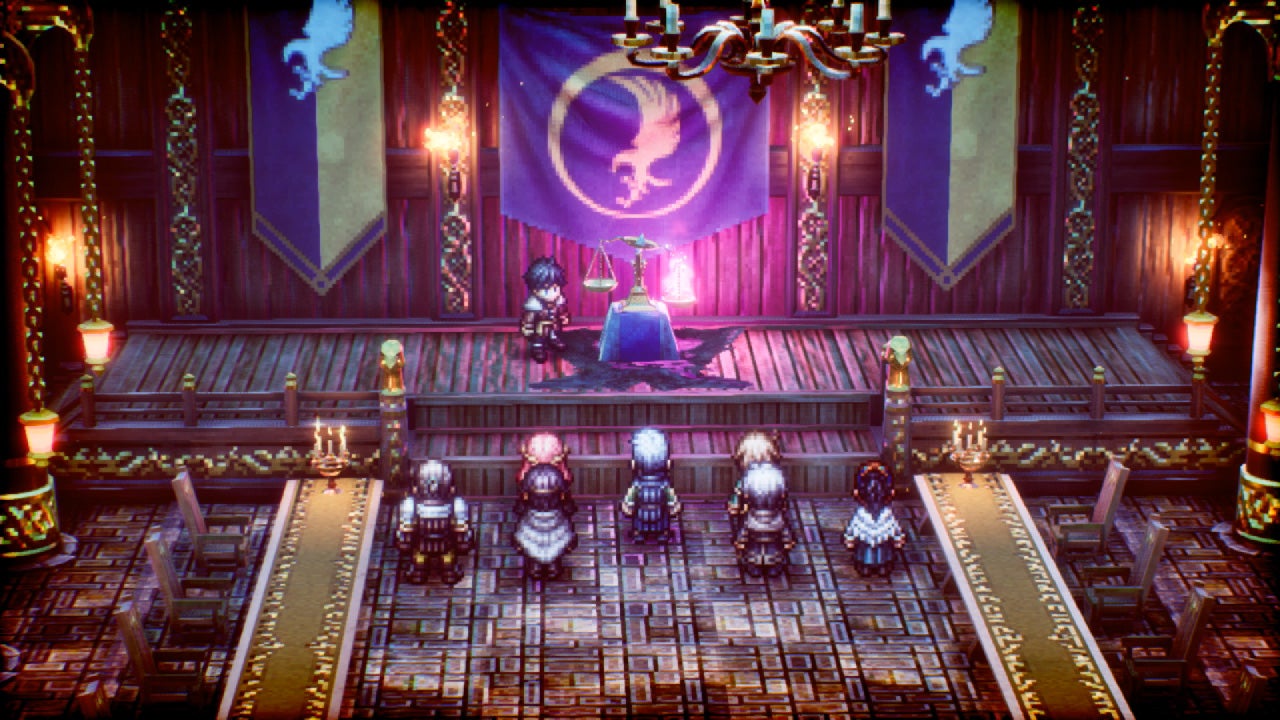
At first, those decisions may feel innocuous but gradually over time, the moral cost of each decision can make the path ahead more difficult to navigate. Triangle Strategy isn’t afraid to shy away from the darker elements of its subject matter and the choices that are required from players can directly impact their relationship with certain characters.
Gameplay
While the story and map overview help to mark each chapter in Triangle Strategy’s saga, the gameplay is focused on turn-based strategy on a grid-based map, each taking part in different parts of the continent. With the HD-2D presentation that carries over from Octopath Traveller, the pixellated character models and small but intricate maps give Triangle Strategy the look and feel of an interactive diorama.
Before combat begins, players have an opportunity to choose which of their units they want to send out and where they should be placed.
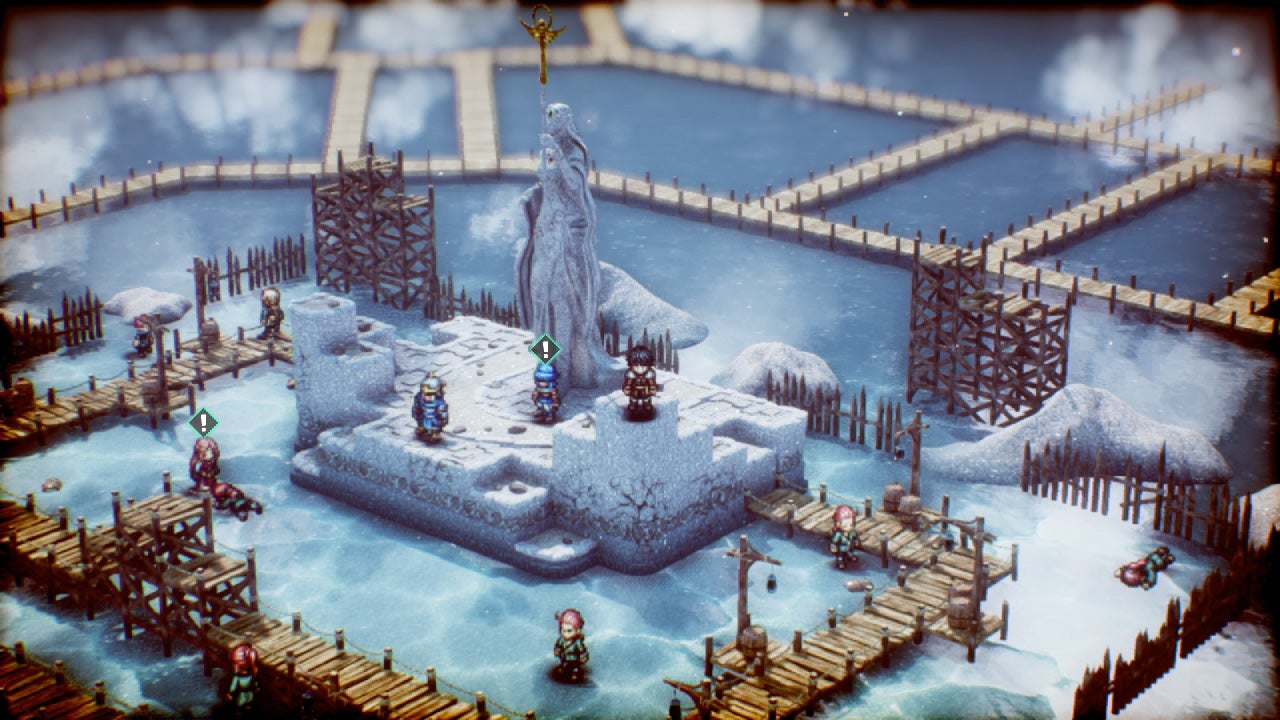
Helpfully, Triangle Strategy will recommend certain characters for each scenario depending on the lay of the land and the objectives for each engagement. Characters like Hughette, an archer with a flying mount, can quickly navigate over cliffs and has increased range from greater heights, while Jen is able to construct ladders and traps.
Most objectives will simply require players to defeat all enemy units while others may require a certain character be kept alive and escorted to the other side of the map. Characters take turns based on their movement speed and like most strategy games, each turn consists of one movement and one action.
Combat, however, puts an emphasis on character placement, relative to the position of enemy units which encourages high mobility and being able to outmanoeuvre them. For example, if a player is able to flank an enemy unit on opposite sides, then it will give players a chance to land a free attack from the unit not currently being controlled. Terrain heights also come into play, as characters with the high-ground have an offensive and defensive advantage.
Read more: 11 best Nintendo Switch games for every kind of player, from Mario Party to Breath of the Wild
Unlike the Fire Emblem series, using enemy placement as opposed to type matchups makes for a more dynamic arrangement in how units are placed at the beginning. Quite often, fights that were lost time and again could be remedied by simply swapping their placement with someone else.
Characters can also level up quickly, depending on the amount of times they are deployed into battle. Most battles usually require somewhere between 10 to 12 units to be deployed and as the story develops, more side characters will appear along the way to help fight alongside Serenoa. There are some obvious favourites who come in particularly useful during most fights due to their prowess but there are plenty of side character’s whose unique abilities only make them adept in specific circumstances, so they may not be utilised as often, making them susceptible to being underpowered when their time eventually comes back around.
As each character has unique weapons and abilities, they can be executed by spending “tactical points” (or TP, for short). One point can be gained each turn and more powerful abilities can only be activated with a certain number of points, so making sure not to overspend when they’re most useful also factors into play.
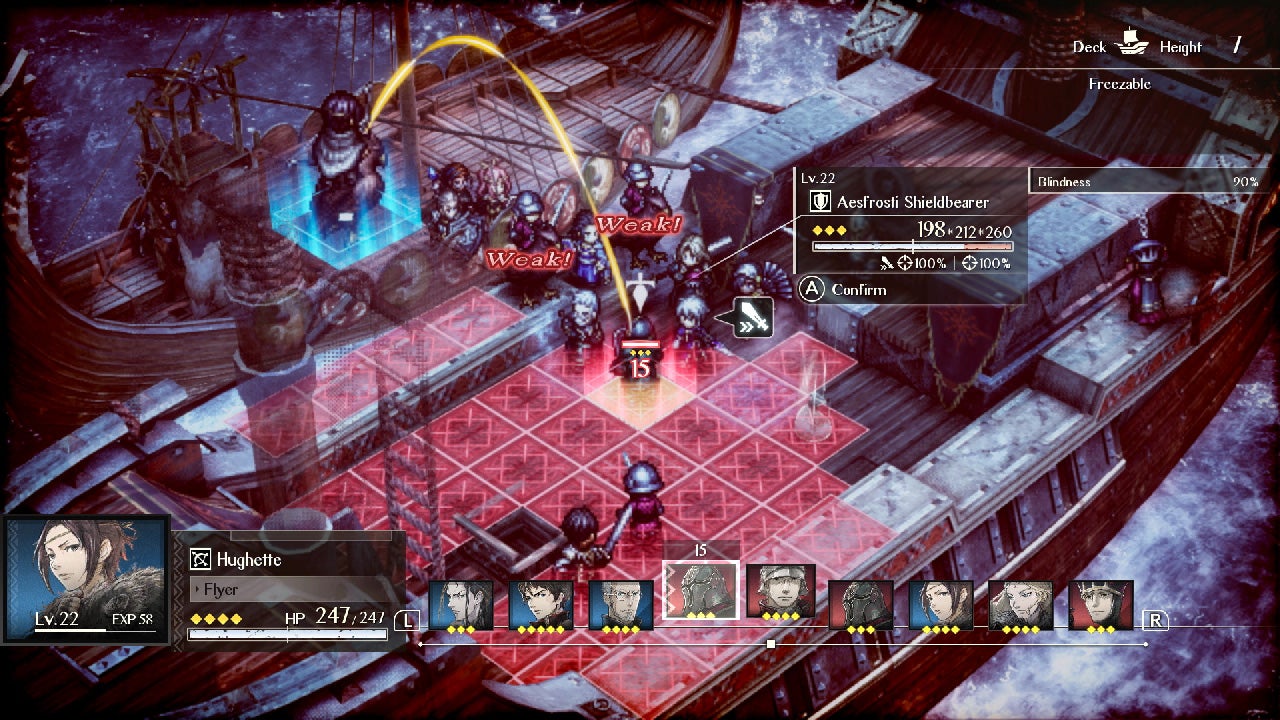
In a fantasy setting, magic also has its place. Certain characters who possess magical abilities can not only use elemental attacks such as fire, ice, wind and lightning but also affect the terrain of the battlefield as well. Fire can set grass and wooden structures on fire for example, but being able to utilise all the elements can lead to some ingenious strategies. Freezing an enemy in place, then melting the ice to create a puddle that can be electrified takes some planning but is a very satisfying way to use the surroundings to your advantage.
Between battles, Serenoa can explore certain regions, speak with locals and collect hidden items. He can also visit an encampment which acts as a central hub for most of the playable characters. This is where weapons can be upgraded, units can be promoted and “mock battles” can be reenacted, which can be useful to help level up characters before the story missions take place.
Only occasionally do players have to grind through optional fights in order to meet the demands of a challenging encounter. Still, combat is engaging enough that they feel less like a chore and more of an opportunity to experiment with different playstyles.
The verdict: Triangle Strategy
With Triangle Strategy, Square Enix has managed to translate the surprise success of their traditional RPG outing with Octopath Traveller into a story that engages players and presents them with choices that will give them pause for thought.
If only occasionally mired by fantasy tropes and the limitations of the genre, fans of turn-based strategy games like Final Fantasy Tactics will find plenty to enjoy in Triangle Strategy. Battles can be slow and methodical but with multiple endings and different choices to make, there are plenty of reasons to explore everything that the game has to offer.
Voucher codes
For the latest discounts on the Nintendo Switch and other tech offers, try the links below:
Want the newest Nintendo Switch model? Here’s where you can buy a Nintendo Switch OLED in the UK today
